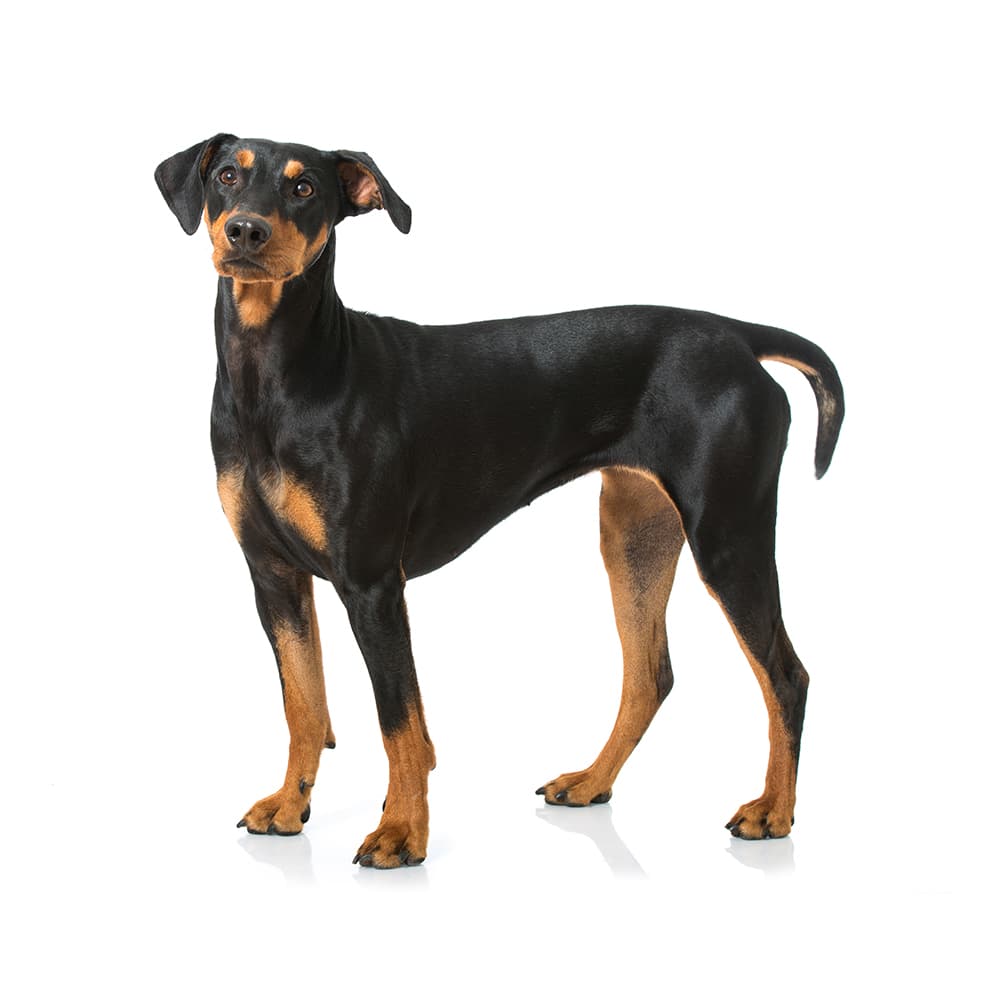Discover your dog's connection to this breed and 200+ others


Discover your dog's connection to this breed and 200+ others



The German Pinscher is one of the oldest breeds in Germany, dating back several centuries. It gave rise to the Miniature Pinscher, Rottweiler, Standard Schnauzer, Affenpinscher, and the Doberman Pinscher (among other breeds). The breed was primarily used as a farm dog, responsible for ratting, or hunting and killing vermin. They also served as all-around handy farm dogs, helping with herding livestock, guarding the property, and offering companionship to their owners. The breed was nearly wiped out during World War II, but was revived by Werner Jung in the 1950s.
German Pinschers can suffer from cataracts, color dilution alopecia, degenerative myelopathy, hip dysplasia, persistent hyperplastic tunica vasculosa lentis, persistent right aortic arch, vitreous degeneration, and von Willebrand disease (Type I). There have been small incidences of heart problems documented, as well as delayed post-vaccine complications in this breed.
German Pinschers are known for their lively, energetic personalities. They are intelligent, alert, and brave, which makes them excellent watchdogs. This breed is also typically very loyal and forms strong bonds with their family members. However, due to their high energy and intelligence, German Pinschers require plenty of mental and physical stimulation to prevent them from becoming bored and potentially destructive. They are known to be somewhat reserved with strangers but are usually good with children and other pets if properly socialized.
A canine genetic lineage is a group of individuals or entire breeds that descended from common ancestors predating modern breed formation. Often these lineages are associated with a ‘type’ of dog with a unique historical working role and associated behaviors (e.g., herding, scent hunting, etc.).
Herding dogs are known for their high intelligence, trainability, and strong work ethic. These breeds originated in areas where managing livestock was an important part of daily life and had large pastoral lands. These breeds were specifically developed to help farmers and shepherds move, manage, and protect herds of livestock. Breeds within the herding dog lineage are agile and are known to have a natural herding instinct, where they like to keep their animals together. They are loyal and attentive to their handlers and are eager to please and are also highly aware of their environment. Many breeds within this linage have gone on to work as rescue and police dogs.
Example breeds with ancestry from this lineage include Border Collie, Cardigan Welsh Corgi, and German Shepherd.
The name Pinscher translates to "terrier" in German, indicating the breed's original job as a ratter.
The German Pinscher is considered the "middle" dog in the family of Pinschers and Schnauzers – larger than the Miniature Pinscher but smaller than the Doberman.
Despite their similar names, the German Pinscher and the Doberman Pinscher are distinct breeds, with the former being the older of the two.
Doi:10.1002/9781119540687 https://www.akc.org/dog-breeds/german-pinscher/ https://www.fci.be/Nomenclature/Standards/184g02-en.pdf
https://www.ukcdogs.com/german-pinscher
Recommended by top vets with decades of experience
21 breeds
64 genetic health markers
50 genetic trait markers
